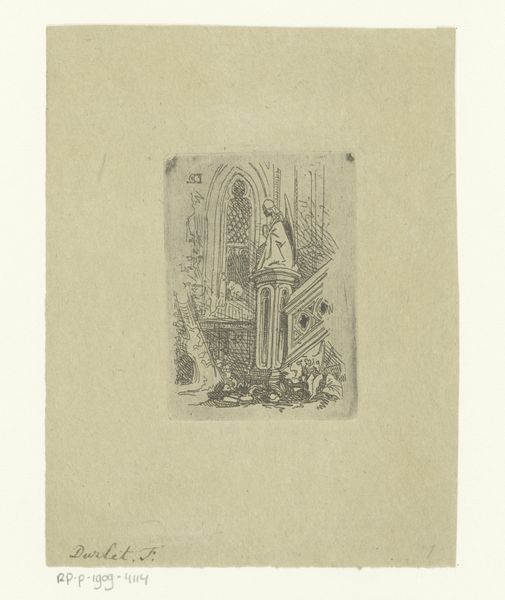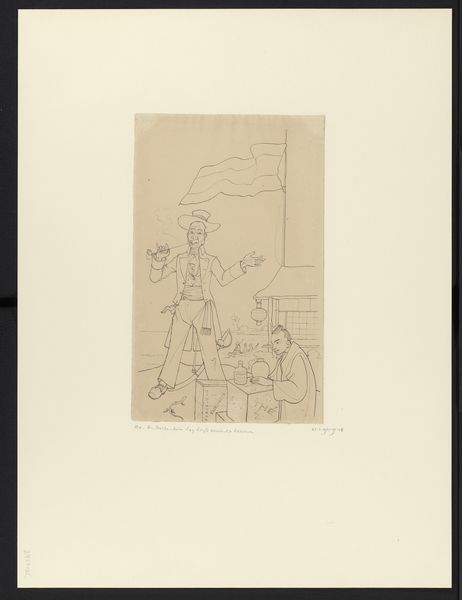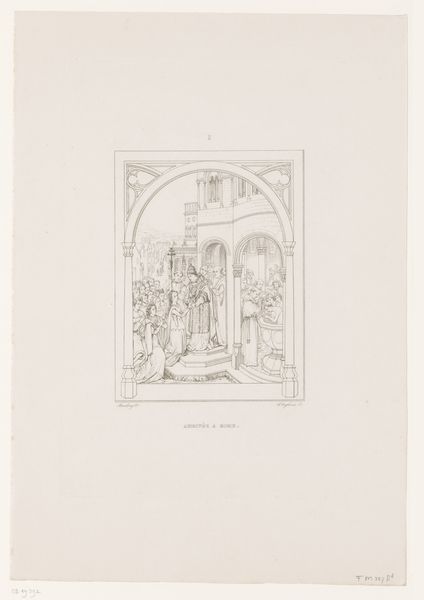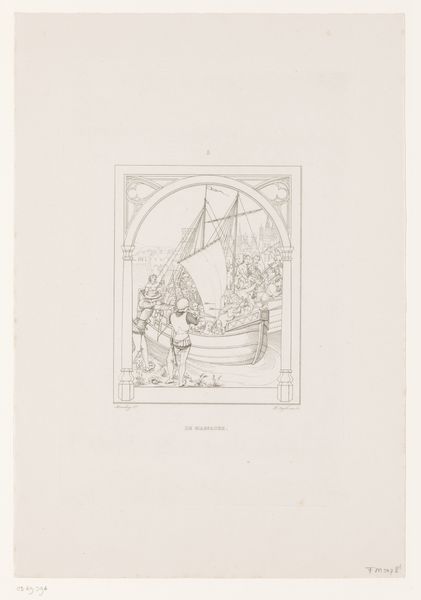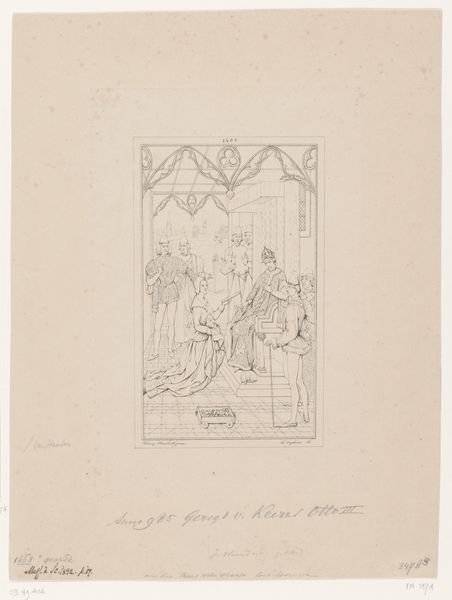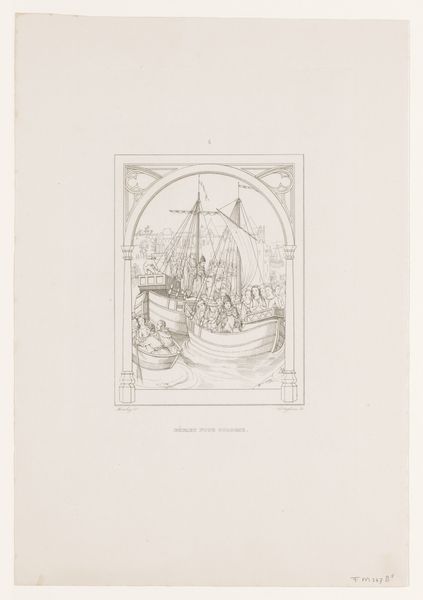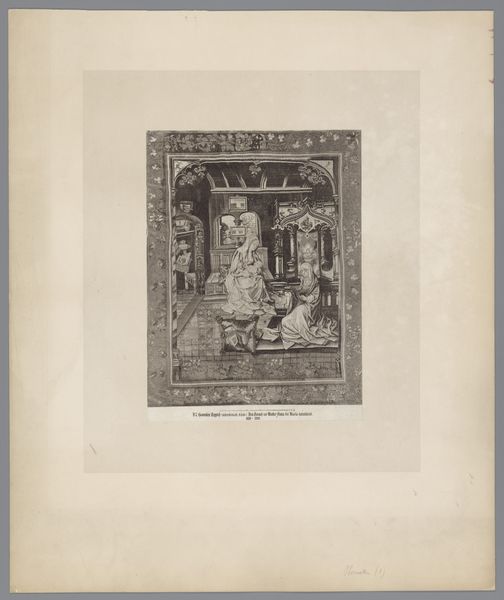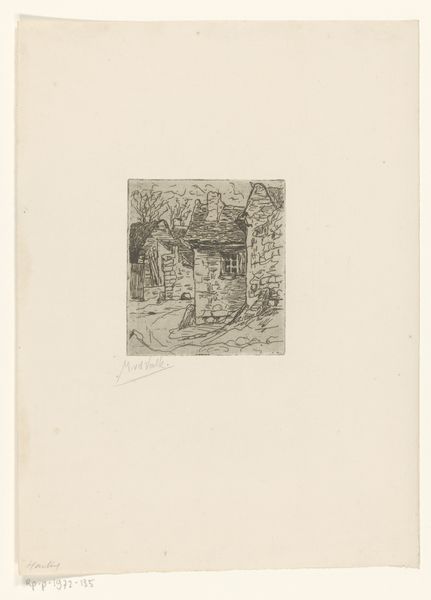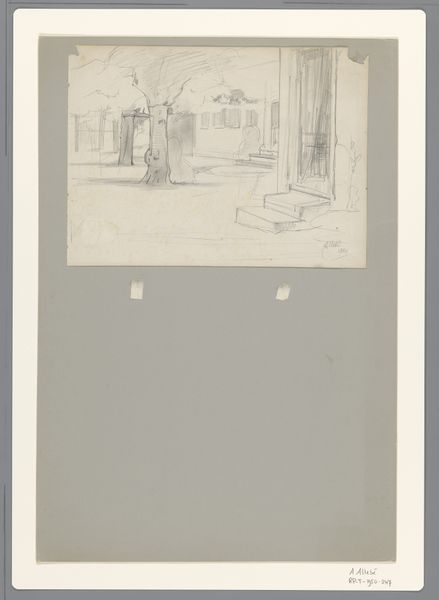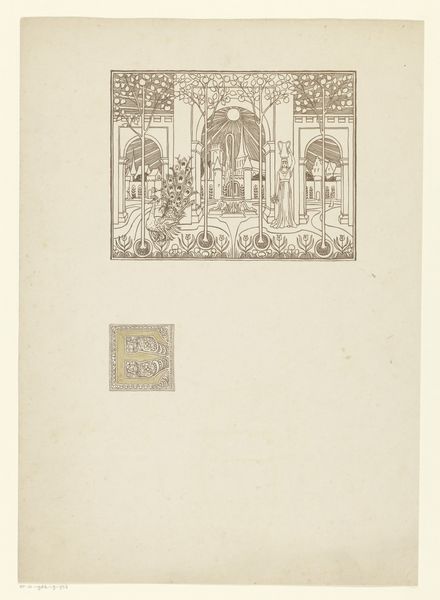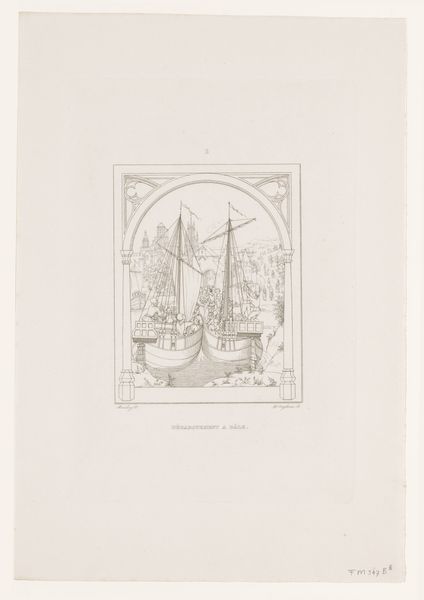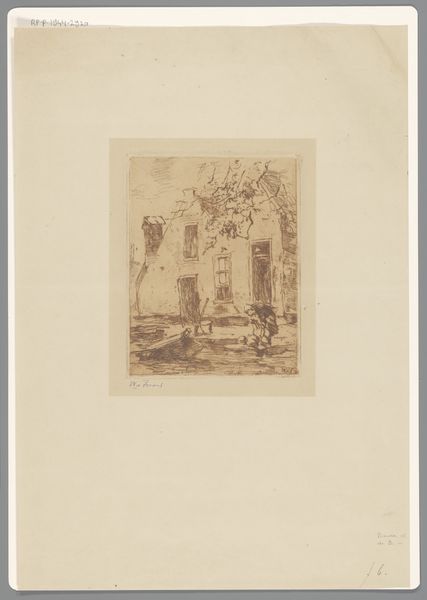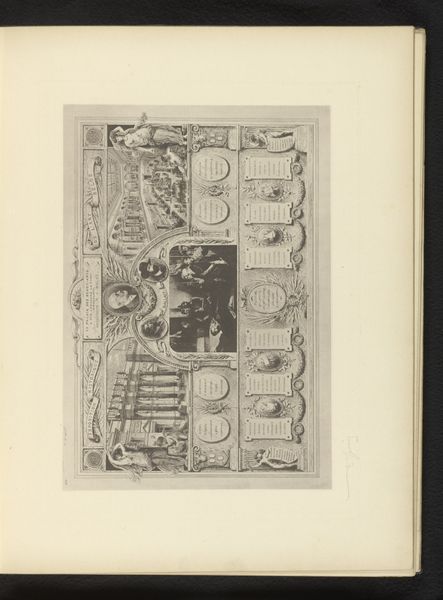
drawing, print, ink, woodcut, pen
#
drawing
#
medieval
#
narrative-art
# print
#
pen illustration
#
landscape
#
figuration
#
ink line art
#
ink
#
linocut print
#
pen-ink sketch
#
woodcut
#
pen
Dimensions: height 342 mm, width 190 mm
Copyright: Rijks Museum: Open Domain
This drawing, titled *1296 / Eduard I verlegt de wolstapel*, was made by Johan Huizinga. The artwork references Edward I’s decision to move the wool staple in 1296. Consider that Huizinga, born in the late 19th century, lived through a period of intense nationalism and cultural re-evaluation in Europe. This drawing can be seen in the context of the artist grappling with themes of national identity and historical narrative. The figures loading the wool, seemingly faceless, could be interpreted as a comment on the anonymous labor that fueled economic power. The figures on the pier, possibly representing authority, oversee the operation, highlighting class and power dynamics. Wool, as a commodity, represents not just economic exchange, but also the exploitation of resources and labor, resonating with the social concerns of Huizinga's time. The act of relocation can be seen as a disruption of established norms. The drawing offers us a chance to reflect on how historical events are interpreted and used to shape contemporary understandings of nationhood and identity.
Comments
No comments
Be the first to comment and join the conversation on the ultimate creative platform.
